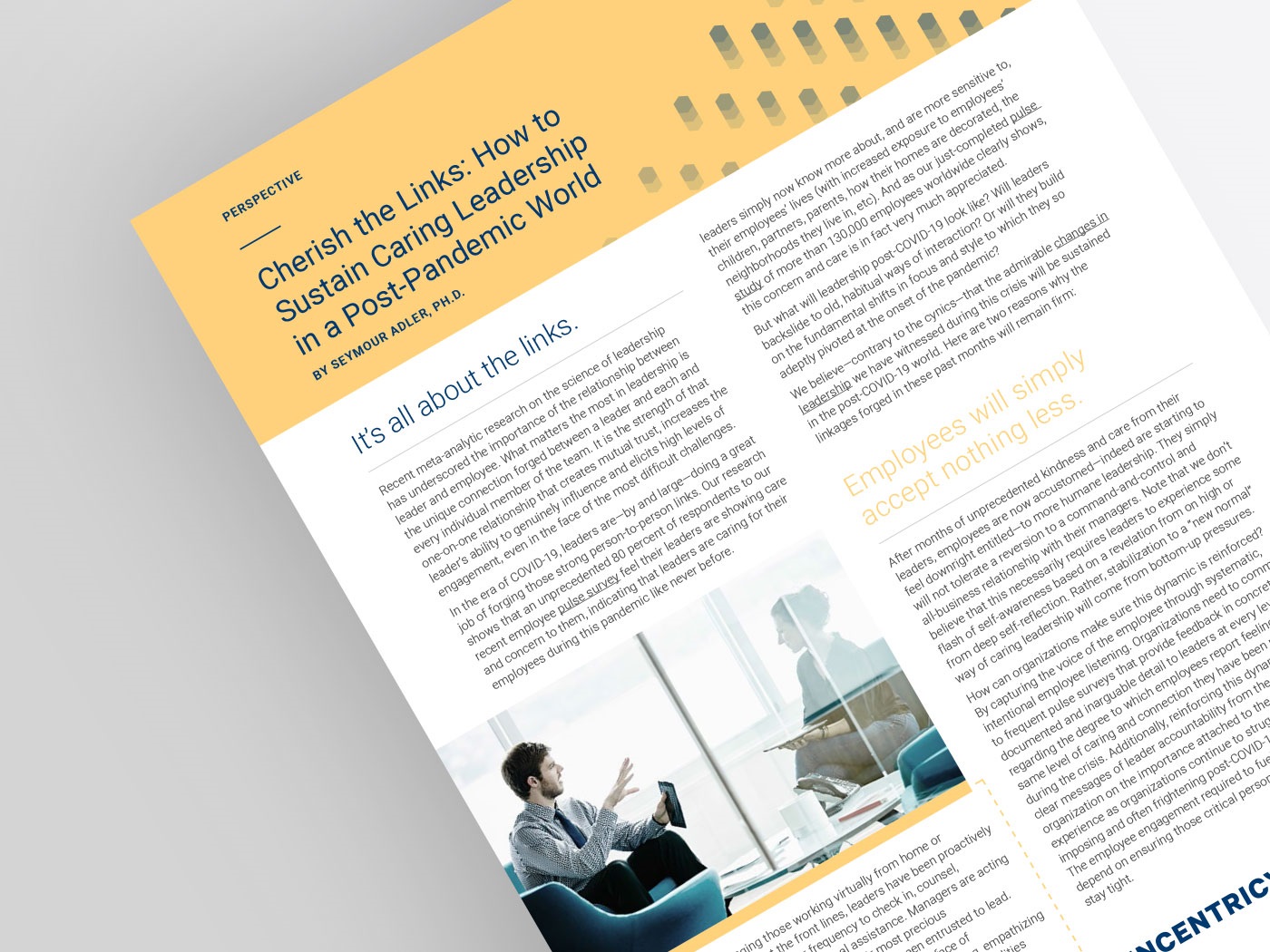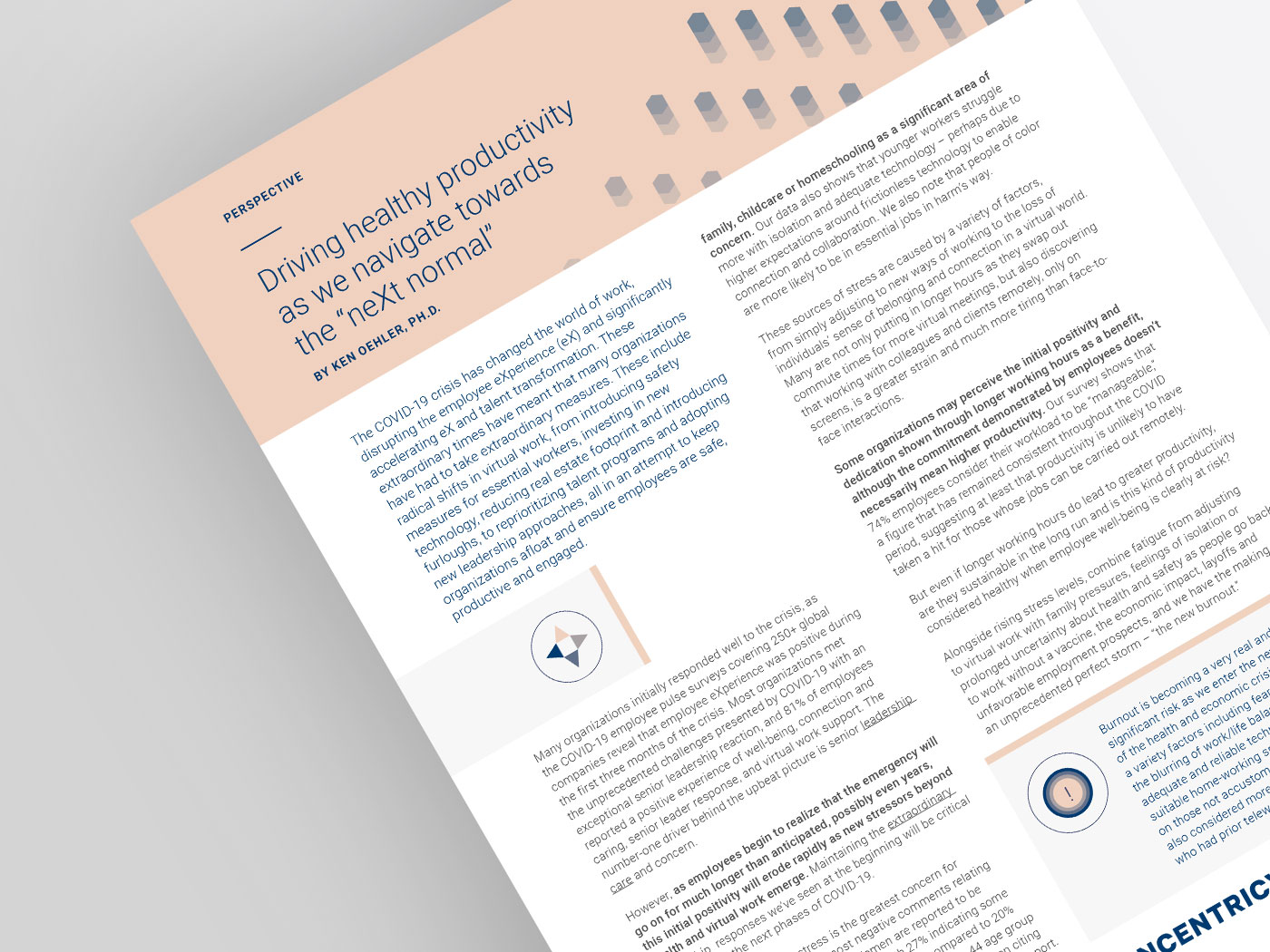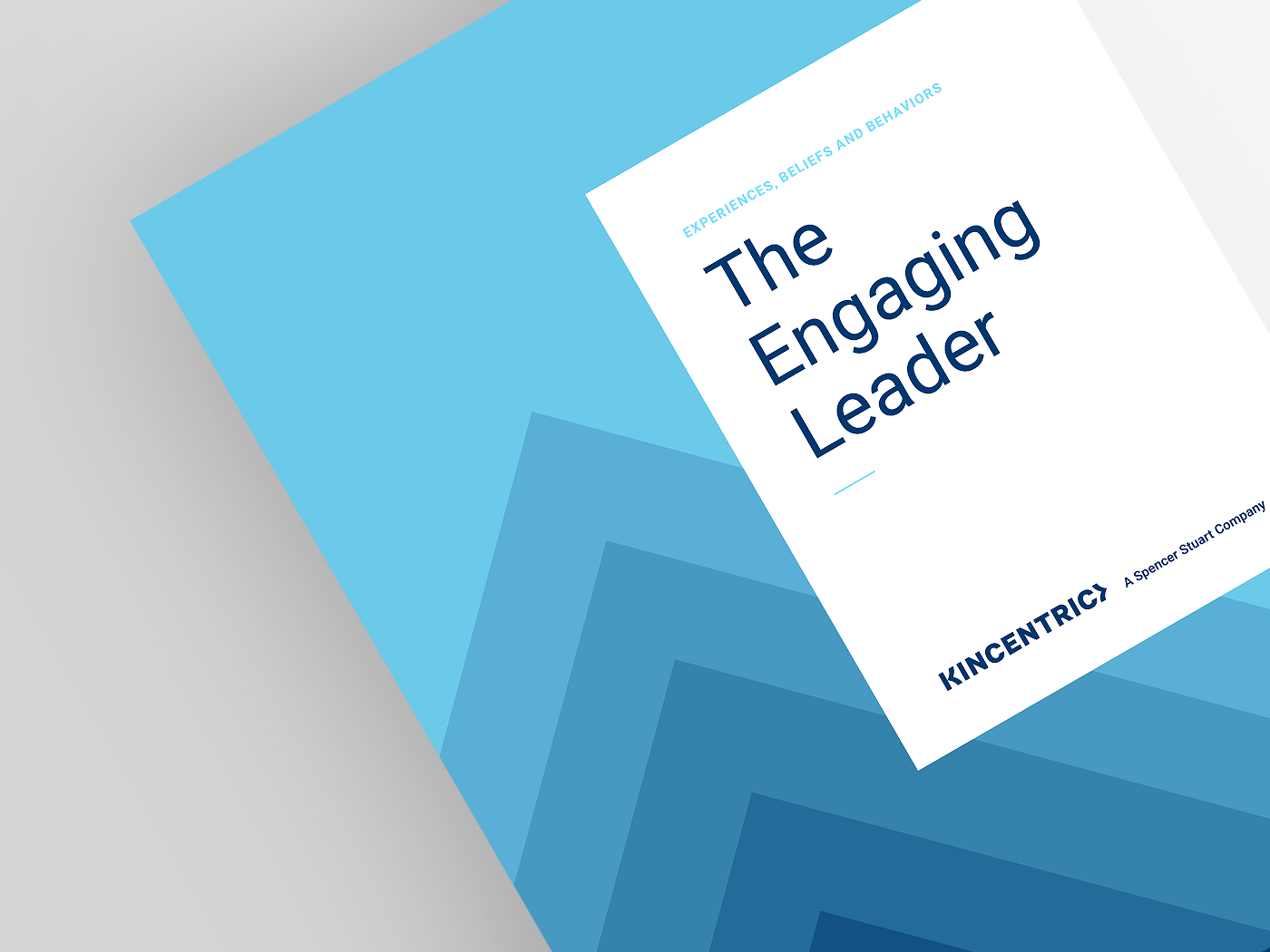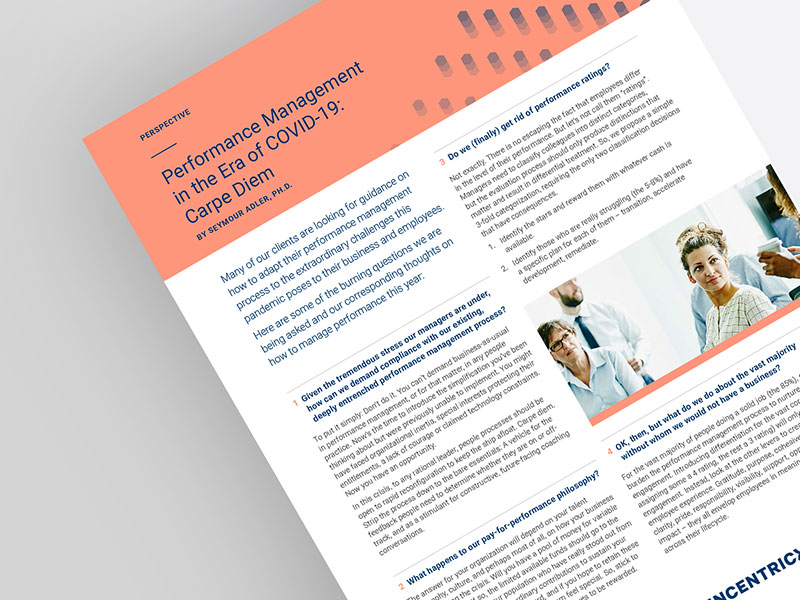
Recent meta-analytic research on the science of leadership has underscored the importance of the relationship between leader and employee. What matters the most in leadership is the unique connection forged between a leader and each and every individual member of the team. It is the strength of that one-on-one relationship that creates mutual trust, increases the leader’s ability to genuinely influence and elicits high levels of engagement, even in the face of the most difficult challenges.
In the era of COVID-19, leaders are—by and large—doing a great job of forging those strong person-to-person links. Our research shows that an unprecedented 80 percent of respondents to our recent employee pulse survey feel their leaders are showing care and concern to them, indicating that leaders are caring for their employees during this pandemic like never before.
Whether managing those working virtually from home or essential workers at the front lines, leaders have been proactively reaching out with greater frequency to check in, counsel, empathize and provide practical assistance. Managers are acting as they should: as stewards of their most precious asset—the individuals whom they have been entrusted to lead. They are demonstrating more humility in the face of unprecedented uncertainty. They are acknowledging, empathizing with—indeed, sharing—the very real emotional vulnerabilities of their teams. No matter how long they’ve worked together, leaders simply now know more about, and are more sensitive to, their employees’ lives (with increased exposure to employees’ children, partners, parents, how their homes are decorated, the neighborhoods they live in, etc). And as our just-completed pulse study of more than 130,000 employees worldwide clearly shows, this concern and care is in fact very much appreciated.
But what will leadership post-COVID-19 look like? Will leaders backslide to old, habitual ways of interaction? Or will they build on the fundamental shifts in focus and style to which they so adeptly pivoted at the onset of the pandemic?
We believe—contrary to the cynics—that the admirable changes in leadership we have witnessed during this crisis will be sustained in the post-COVID-19 world. Here are two reasons why the linkages forged in these past months will remain firm:
After months of unprecedented kindness and care from their leaders, employees are now accustomed—indeed are starting to feel downright entitled—to more humane leadership. They simply will not tolerate a reversion to a command-and-control and all-business relationship with their managers. Note that we don’t believe that this necessarily requires leaders to experience some flash of self-awareness based on a revelation from on high or from deep self-reflection. Rather, stabilization to a “new normal” way of caring leadership will come from bottom-up pressures.
How can organizations make sure this dynamic is reinforced? By capturing the voice of the employee through systematic, intentional employee listening. Organizations need to commit to frequent pulse surveys that provide feedback in concrete, documented and inarguable detail to leaders at every level regarding the degree to which employees report feeling the same level of caring and connection they have been reporting during the crisis. Additionally, reinforcing this dynamic requires clear messages of leader accountability from the top of the organization on the importance attached to the employee experience as organizations continue to struggle with the imposing and often frightening post-COVID-19 uncertainties. The employee engagement required to fuel recovery will largely depend on ensuring those critical person-to-person linkages stay tight.
The second dynamic that we expect will help sustain a more caring leadership style is that so many managers, when the pandemic hit, actually did shift—often within hours—to a more caring leadership style. We suspect that many did not yet realize in January 2020 that lying dormant in their skill set was the potential to connect on a more emotional level with their employees. But they did—perhaps a bit awkwardly at first, but fairly quickly and with growing comfort, even gusto. They applied discipline to their emotional leadership, scheduling weekly or even daily check-ins, both in virtual and essential settings. They spoke from the heart.
So, what can organizations do to avert a natural reversion to old leadership habits? We think there are at least three tactics crucial to sustaining this trend. First, organizations should immediately begin to capture stories of leaders who have successfully transformed their styles and document the impact that transformation has had on individual employees, on their teams and on the businesses they lead. While it is all still fresh, gather and curate these stories into repositories. Later, when the risk of backsliding threatens, these stories can be disseminated through multiple channels and at a regular cadence to remind leaders of the heroic shifts they made and the value they added through those shifts. Publicize these stories in town halls and in testimonial videos as well as in newsletters and in training and onboarding programs.
Second, invest in deepening these skills through intensified leadership development. A more caring approach to leadership rests firmly on proven models and tools, based on solid leadership science. This science shows how caring mindsets can be operationalized into effective and long-lasting, leader-initiated employee experiences. There are established techniques for forging stronger links with and among team members. There are validated models for building individual and collective emotional resilience. And the COVID-19 experience has taught us how to utilize these tools and techniques flexibly, cost-effectively and with focus. Across the globe, we have implemented blended, continuous developmental journeys that incorporate—in agile and impactful combinations—virtual facilitation, self-directed and technology-supported learning, peer networking and other methods that consolidate and expand leader skill sets. These blended developmental journeys reinforce the message that becoming a great leader is a quest, not a singular event.
Third, these changes in leadership style should be memorialized and institutionalized in updated leadership competency models. At the moment, we are working with one of the world’s largest retailers to revise its leadership behavior framework to more strongly emphasize the compassion and caring the best leaders have demonstrated during this period. This updated model can then serve as the template against which the organization will assess the readiness of existing employees and external candidates to assume future leadership roles. These caring behaviors must also be embedded in the post-COVID-19 performance management process, conveying clearly and in specific terms, the “how” expectations against which future leader performance will be evaluated and rewarded. Organizations must hold leaders accountable for caring because caring leadership is going to be key to organizational survival in the frightening uncertainty of the post-COVID-19 future.
In the face of this horrific and game-changing pandemic, we have realized a major silver lining—the transformation of normative leadership styles up and down the hierarchy to create more connected communities. As we move out of the crisis to whatever “new normals” emerge, it behooves organizations to consolidate the more caring—and effective—leadership mindset that has emerged. In these past, difficult months, our leaders have strengthened the linkages, and organizations must now help them to keep those linkages tight.
German Translation | Lesen Sie auf Deutsch


An engaging leader profile is built through the leader’s guiding beliefs, displayed behaviors, and critical experience.

Many of our clients are looking for guidance on how to adapt their performance management process to the extraordinary challenges this pandemic poses to their business and employees.
Want the latest insights delivered straight to your mailbox?